William Frederick Freedman was one of the world's best cryptographs.
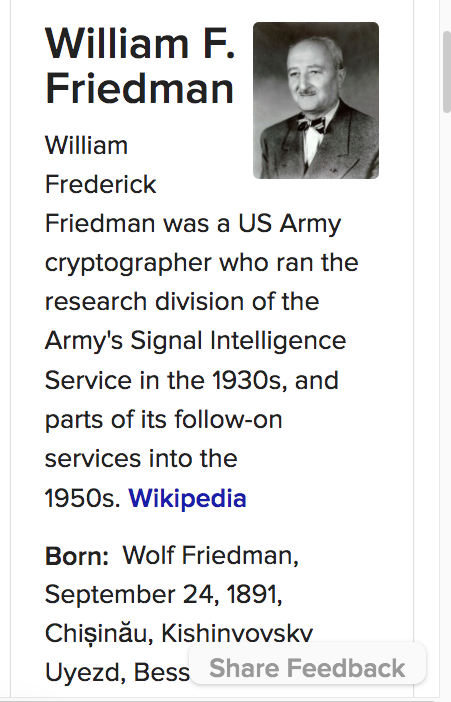

Freedman and his team between jobs decoded and recorded historical cryptic texts.
One by one the codes were cracked, but one ancient text stubbornly defied all attempts to decode it.
The Voynich Manuscript
The cryptographs finally gave up.
It was the only code they were unable to crack.
The 200 page manuscripts with symbols had been questioned for decades!
An antiques dealer from New York visited a villa near Rome during the beginning of the 20th Century.
The name of the dealer looking for precious books was William Voynich.
A Jesuit text was found stored in the Villa near Rome.
Villa Mondragone, where many Jesuit texts were stored.
Voynich relocated his London bookshop to 175 Piccadilly in 1917. Also in 1917, based on rumors, Voynich was investigated by the FBI, in relation to his possession of Bacon's cipher. The report also noted that he dealt with manuscripts from the 13th, 12th, and 11th centuries, and that the value of his books at the time was half a million dollars. However, the investigation did not reveal anything significant beyond the fact that he possessed a secret code nearly a thousand years old.
Voynich died at Roosevelt Hospital in New York, in 1930 of lung cancer.
The most famous of Voynich's possessions was a mysterious manuscript he said he acquired in 1912 at the Villa Mondragone in Italy, but first presented in public in 1915. The book has been carbon-dated, which revealed that the materials were manufactured sometime between 1404 and 1438, although the book may have been written much later. He owned the manuscript until his death.
One of the trunks Voynich explored came from one of the most famous men from the 17th century,
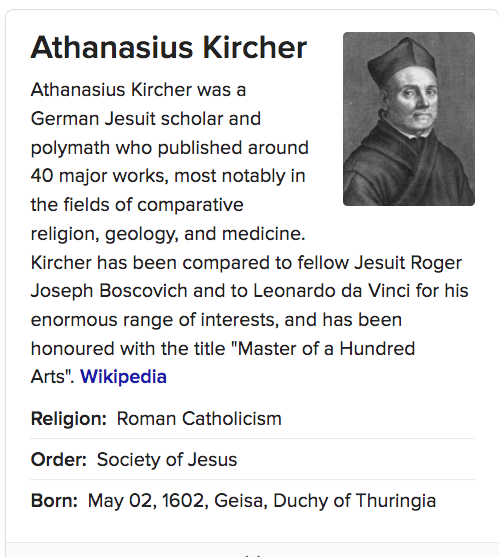
Kircher claimed to have deciphered the hieroglyphic writing of the ancient Egyptian language, but most of his assumptions and translations in this field were later found to be incorrect. He did, however, correctly establish the link between the ancient Egyptian and the Coptic languages, and some commentators regard him as the founder of Egyptology. Kircher was also fascinated with Sinology and wrote an encyclopedia of China, in which he noted the early presence there of Nestorian Christians while also attempting to establish links with Egypt and Christianity.
Kircher's work in geology included studies of volcanoes and fossils. One of the first people to observe microbes through a microscope, Kircher was ahead of his time in proposing that the plague was caused by an infectious microorganism and in suggesting effective measures to prevent the spread of the disease. Kircher also displayed a keen interest in technology and mechanical inventions; inventions attributed to him include a magnetic clock, various automatons and the first megaphone.
In 1631, while still at Würzburg, Kircher allegedly had a prophetic vision of bright light and armed men with horses in the city. Würzburg was shortly afterwards attacked and captured, leading to Kircher being accorded respect for predicting the disaster via astrology, though Kircher himself privately insisted that he had not relied on that art. This was the year that Kircher published his first book (the Ars Magnesia, reporting his research on magnetism), but having been caught up in the Thirty Years' War he was driven to the papal University of Avignon in France. In 1633 he was called to Vienna by the emperor to succeed Kepler as Mathematician to the Habsburg court. On the intervention of Nicolas-Claude Fabri de Peiresc, the order was rescinded, and he was sent instead to Rome to continue with his scholarly work, but he had already embarked for Vienna.
On the way, his ship was blown off course and he arrived in Rome before he knew of the changed decision. He based himself in the city for the rest of his life, and from 1634 he taught mathematics, physics and Oriental languages at the Collegio Romano (now the Pontifical Gregorian University) for several years before being released to devote himself to research. He studied malaria and the plague, amassing a collection of antiquities, which he exhibited along with devices of his own creation in the Museum Kircherianum.
Back to Voynich, while sorting through the trunk found in the Villa, he found an unusual book among the various manuscripts.
Voynich purchased the manuscript and spent the rest of is life trying to decipher it.
By the time he died he had not come close to a solution.
After his death, the manuscript ended up at the Beinecke Rare Book & Manuscript Library at Yale.
Established by a gift of the Beinecke family and given its own financial endowment, the library is financially independent from the university and is co-governed by the University Library and Yale Corporation.
An elevated public exhibition mezzanine surrounds the glass stack tower, and displays among other things, one of the 48 extant copies of the Gutenberg Bible.[7] Two basement floors extend under much of Hewitt Quadrangle. The first sub-grade level, the "Court" level, centers on a sunken courtyard in front of the Beinecke, which features The Garden (Pyramid, Sun, and Cube). These are abstract allegorical sculptures by Isamu Noguchi that are said to represent time (the pyramid), sun (the disc), and chance (the cube).
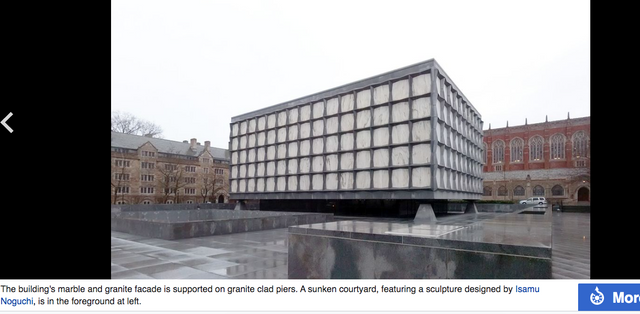
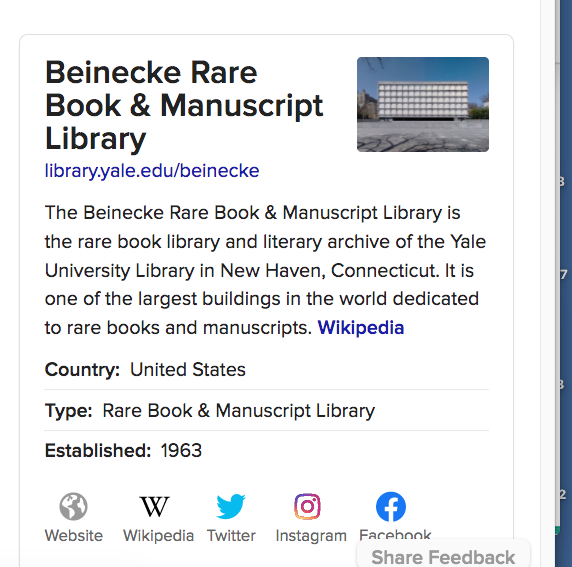
One of the leading experts on the Voynich manuscript is Renee Zandbergen, who has been working on this for years.
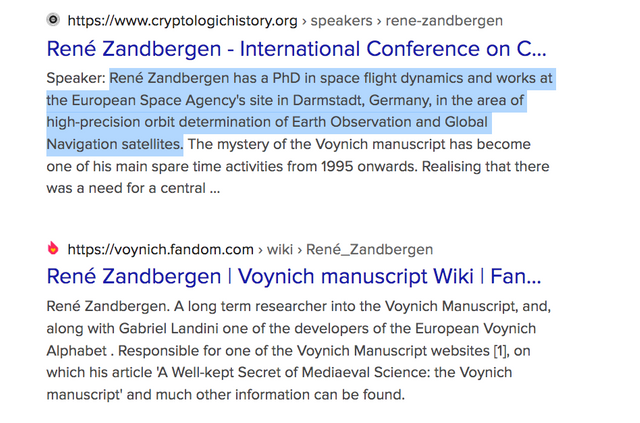
He thought it would be something he could decipher and read, but like so many who had tried before him, he couldn't.
Written hundreds of years ago, yet even with modern technology no one has been able to decipher it.
On 200 pages of parchment for the universe
of a million graphic details
and some 170,000 characters. . .
unfolds in this tangle of texts and images where an experts eye can easily get lost.
With the drawings with strange names it allows for so many different interpretations.
A closer look makes the manuscript appear less confusing.
The drawings help to break down the book into separate sections.
One of the reconstructors feels that the greater preponderance of the text in the book has to do with botanicals/herbals.
It's clearly a book about these plants and has to do with their root systems, their leaves, their flowers.
Some of the drawings even seem to be inspired by reality.
One of the reconstructors assumes part of the book talks about where one can find the plant, how it grows and what it can be used for.
In the past we know medicine was based on herbs.
Another big part of medicine during that time period was based on the Zodiac charts, sky charts. There is page after page of these Zodiacal drawings.
The drawings are very detailed, very specific but no one can tell what they say in the writings.
Even in the text there are parallels to natural shapes.
Take for instance,
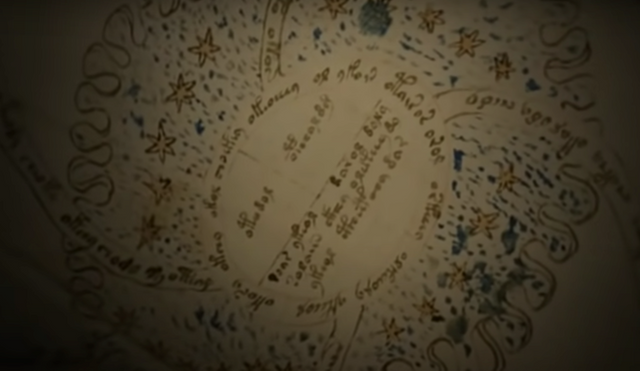
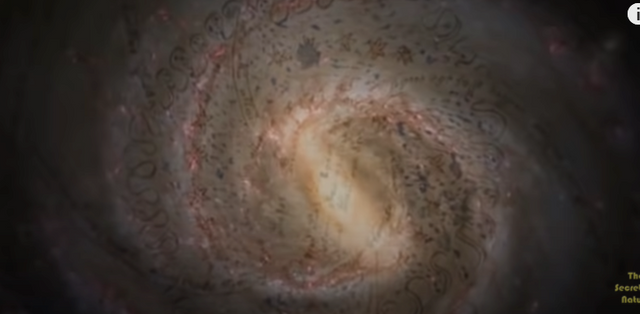
Some of the manuscripts pages also contain optical phenomena.
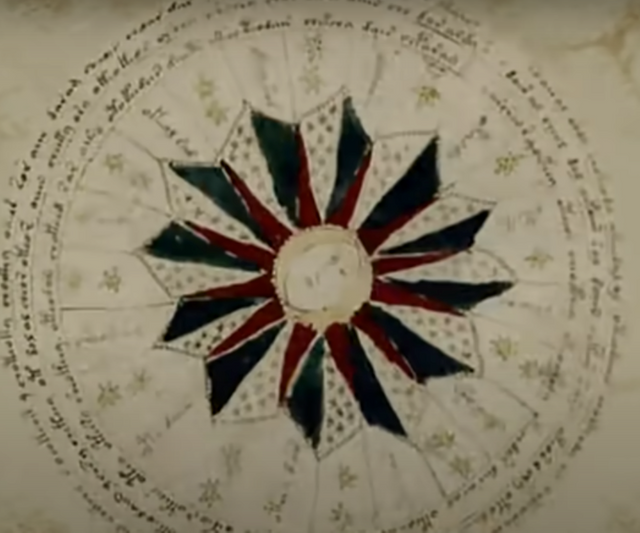
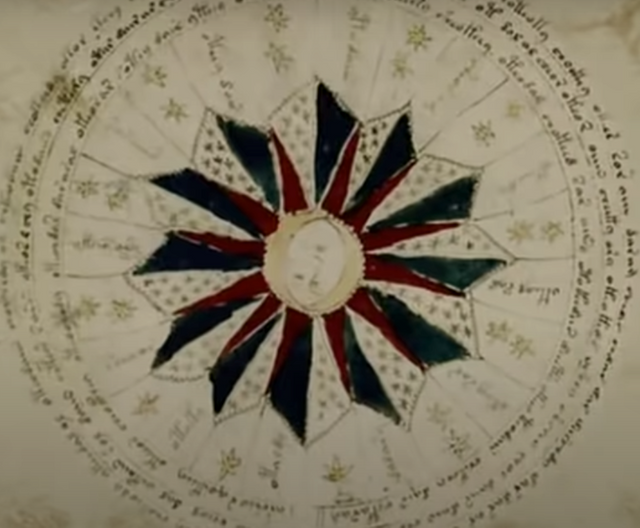
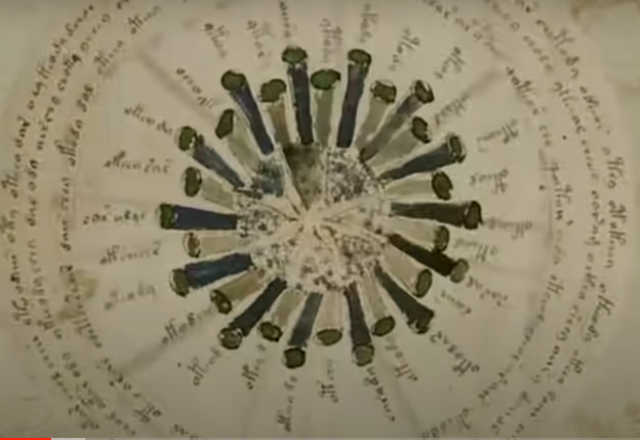
If set in a spinning motion, these illustrations come to life.
In the middle ages, in order to be treated herbally, you had to know what your Zodiac Sign was.
Then come the ladies later on in the book, tumbling through pools of green water.
These bathing scenes are puzzling to many.
Some wonder if it can be taken as a hint to a collection of recipes for a bathing cure or even a secret to the fountain of youth?
Other illustrations seem to support that theory.
Then it's followed by a section at the end that looks like recipes that show how you need to cut up your herbs from the proceeding pages.
The question is asked by some, was the author a medical genius trying to hide his discoveries from competitors?
Or was it from the Holy Inquisition which would often rigorously root out new knowledge?
It was William Voynich himself who discovered the first track leading to the anonymous author.
He was busy making repro graphs of the original when by accident when an item appeared that had been invisible.
Someone had written something on the first page.
The words had been scratched from the parchment, but under ultraviolet light traces of ink become visible.
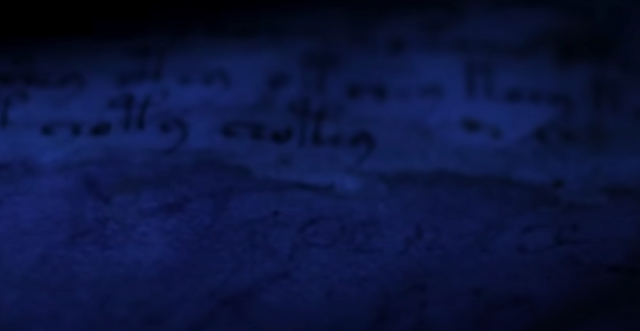
A traveling doctor, who was an expert in medical plants in the 17th century.
His preparations were famous far and wide.
In 1608 he was summoned to Prague by Emporer Rudoph II
The emperor often suffered from depression and melancholy.
The traveling doctor's herbal extracts were to relieve the emperor's stress.
He experimented with herbs. Grew them and distilled extracts.
He mixed them with alcohol and made a fortune.
His alcoholic remedies seemed to buoy the emperor's well being.
To thank him, the emperor raised him to the gentry and appointed him Chief Distiller.
So why would a doctor encode his healings?
People like this could easily get themselves into trouble with the church and with the authority of the day.
The curator of the Beineke Library's Manuscript Collection.
He states, "Alchemy was very closely related to the growth of science in the early modern period.
Yet at the same time, alchemy was considered to be an extremely arcane topic meaning the information recorded in these texts was often considered to be extremely secret.
So was the traveling doctor appointed as Chief Distiller the originator of the world's most mysterious manuscript?
Concerning the plant illustrations, one will notice most of them do not correspond to any natural plant.
Details are out of proportion or reminiscent of part of the human anatomy or even of abstract symbols.
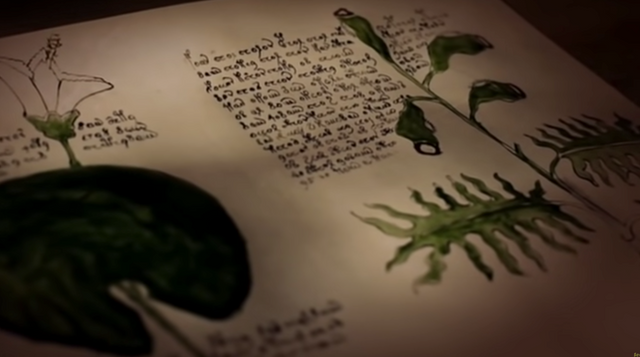
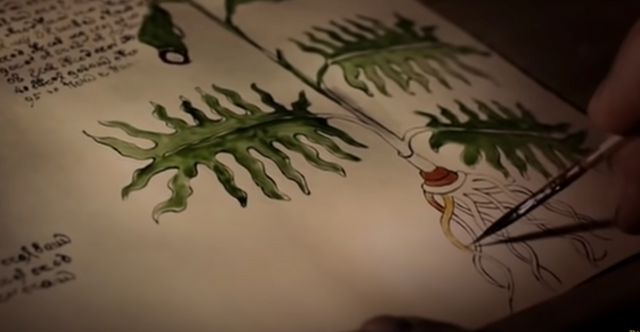
They appear to be allegorical images rather than botanical illustrations.
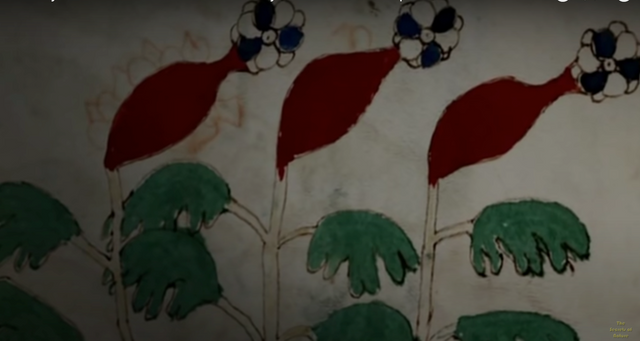
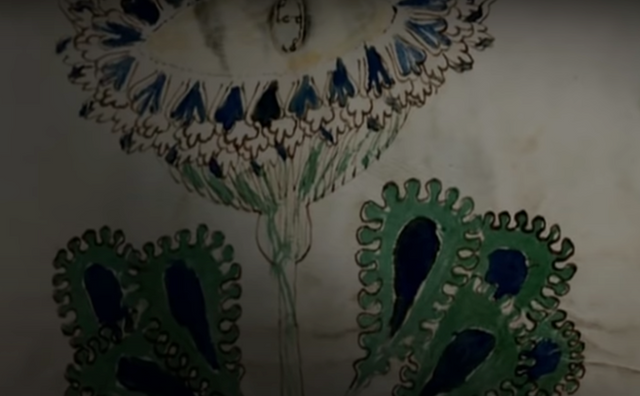
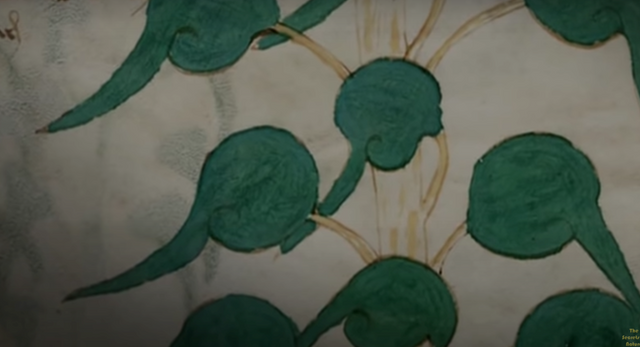
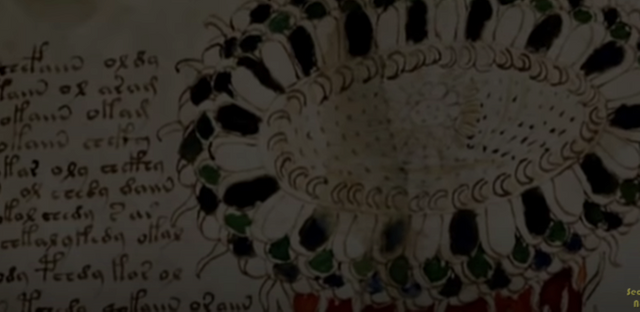
This type of representation dates back to the middle ages.
The Medieval presentation was to not present them realistically or naturalistically, but rather to represent them in terms of the powers that these particular plants possessed.
However in the early 17th Century illustrations were different.
Plants were depicted in a much more realistic manner.
If we're talking about a book that was written in the 16th or 17th century you would expect it to be much more similar to a book like this from 1562 with a much greater emphases placed on precision and the plants are easily identifiable.
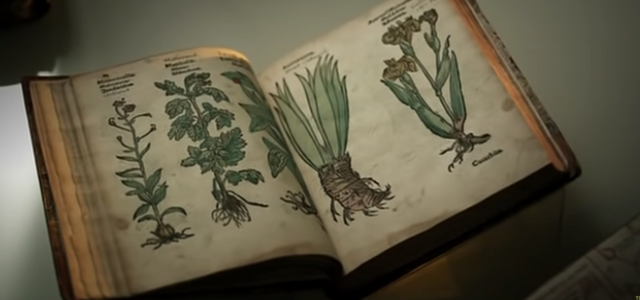
The traveling doctor would have only worked in the styling of his own time.
Even though his name is found on the first page, it's unlikely that he was the author.
Other books from his estate bear almost identical signatures.
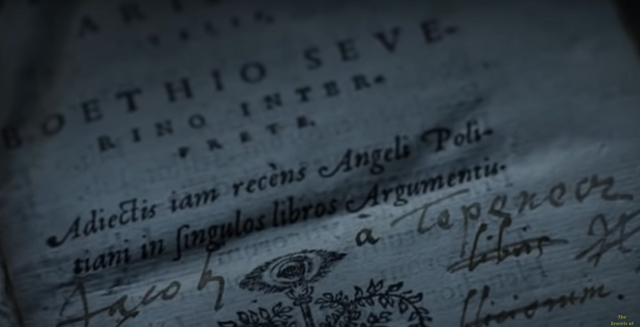
It was in the traveling doctor's possession clearly at one time, but must have been written at a much earlier time.
One hint comes from a letter that was written found with the manuscript.
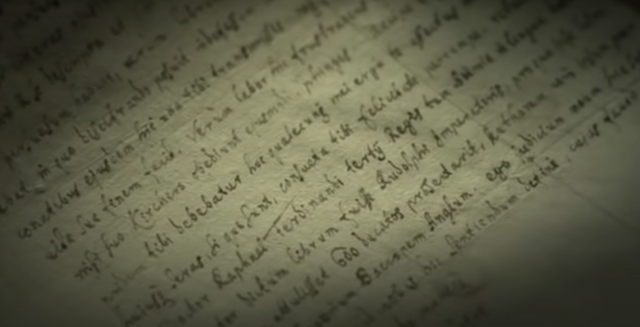
Written in 1665 by the Bohemian doctor, Johannes Marcos Matsi.
Sending it to his friend, a Scientist in Rome, Athanasius Kircher.
He sent it to him to be translated.
Matsi heard from a friend, that it was once bought by the Bohemian Emperor, Rudolf II of Hapsburg for the price of 600 ducats.
This emperor was known for sponsoring the sciences.
It is said that in his day no distinction was made between natural science and magic.
He had a big collection of occult books, magical instruments and objects.
He spent huge amounts of money for his collection.
Were they all magical or were they advanced technology from another era? You decide!
When Rudolf died, he left behind a great debt.
The traveling doctor appears to have been one of his creditors.
He must have been compensated by objects in the emperor's library.
This is likely how the Voynich Manuscript came into his possession.
The letter even names the book's author, Roger Bacon.
Roger Bacon was a famous clergyman in the early 13th century.
Bacon had an interesting sobriquet. . ."Mirabilus" or The Miracle Doctor!
Bacon's insights greatly exceeded the horizons of his contemporaries.
- his urge for new discoveries frequently got him into conflict with the church.
- he was imprisoned at various times.
- he was interested in optical phenomena.
- he found an explanation for the rainbow.
- he also experimented with reflection and refraction of light.
- among other items, Bacon worked with magnifying glasses.
- experimented with lenses to correct visual problems.
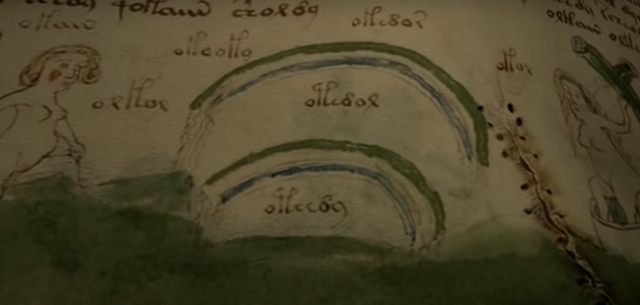

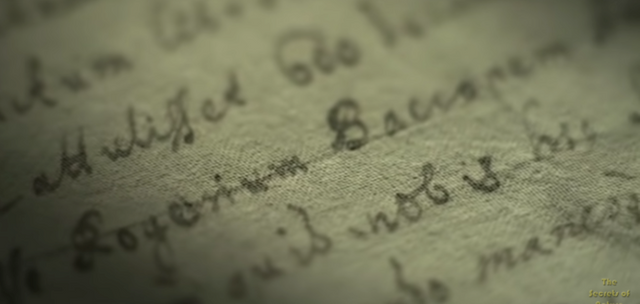
Many drawings in the astrological section of the manuscript resemble shapes that are normally only seen through a microscope.
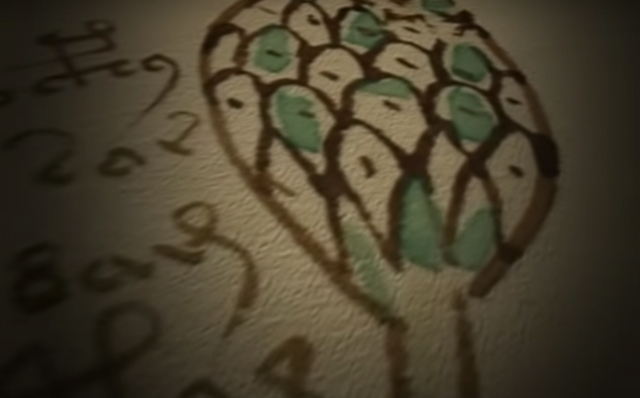
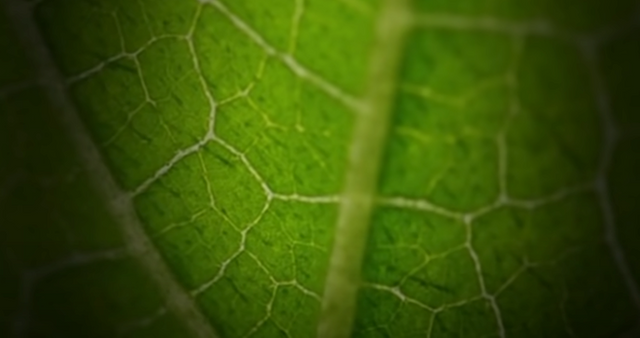
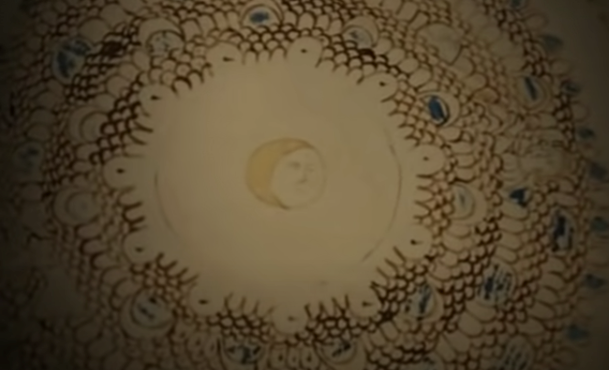
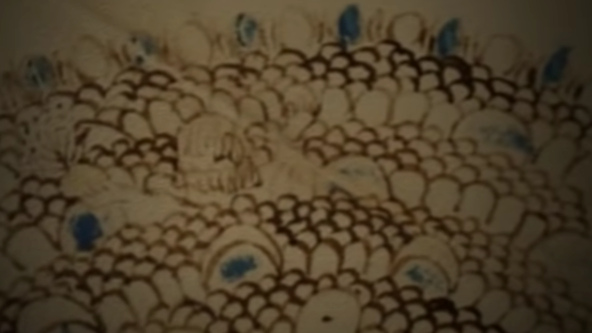
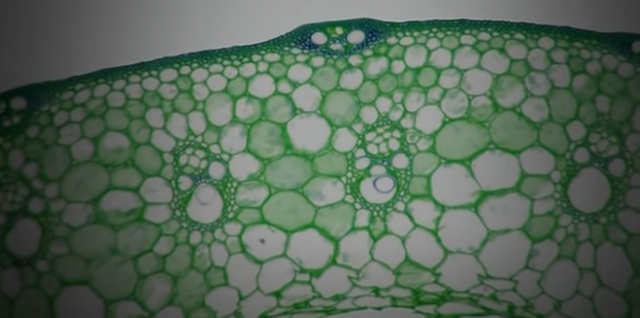
Are these the very first insights into a hidden world?
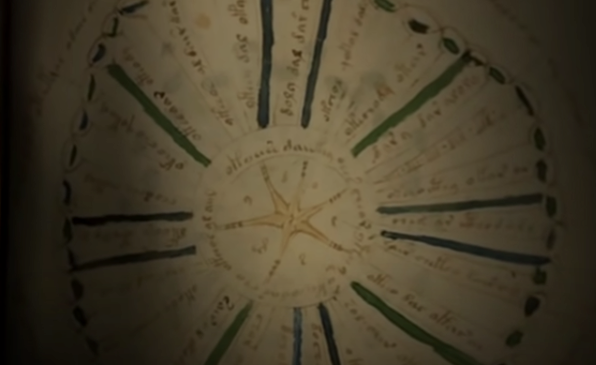
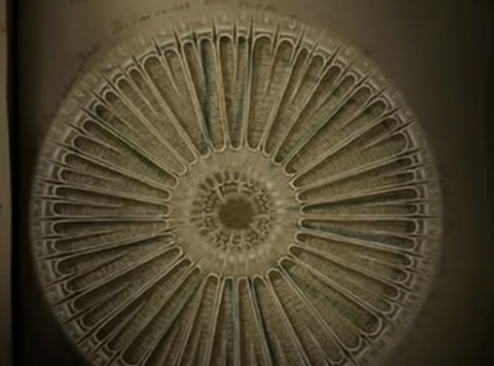

That would explain his encoding.
Because of his discoveries, Bacon must have worried about being persecuted as an infidel.
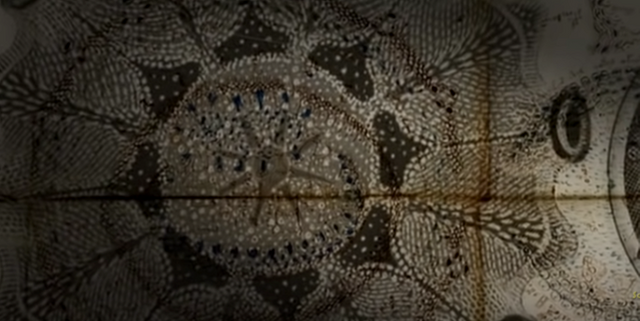
Didn't the religious leaders of the day try to do this to Jesus?
Matthew 22:15-22
King James Version
15 Then went the Pharisees, and took counsel how they might entangle him in his talk.
16 And they sent out unto him their disciples with the Herodians, saying, Master, we know that thou art true, and teachest the way of God in truth, neither carest thou for any man: for thou regardest not the person of men.
17 Tell us therefore, What thinkest thou? Is it lawful to give tribute unto Caesar, or not?
18 But Jesus perceived their wickedness, and said, Why tempt ye me, ye hypocrites?
19 Shew me the tribute money. And they brought unto him a penny.
20 And he saith unto them, Whose is this image and superscription?
21 They say unto him, Caesar's. Then saith he unto them, Render therefore unto Caesar the things which are Caesar's; and unto God the things that are God's.
22 When they had heard these words, they marvelled, and left him, and went their way.
Remember how Bacon experimented with lenses to correct visual problems?
Were his lenses also capable of stronger magnification?
Richard Santa Coloma has investigated the optical phenomena contained in the manuscript.
He states, that at the time of Roger Bacon, microscopes did not exist that could make the type of detailed observation seen in the Voynich manuscript.
It wasn't until the early 17th century that Cornelius Drebble developed the complex, sophisticated twin convex lens microscope where we would be able to see the types of things which seemed to be reflected in these images.
Some have thought it was a type of scientific notebook with actual observations through the microscope and microscopic experiments by Cornelius.
Over time many believe that it was more of a fantasy document as they feel there are too many fantasy elements.
For instance, many feel that most of the illustrations feel detached from reality.
Some wonder if they were reflecting on a longing of a place of fantasy or imagined from the deep past.
Makes you wonder if that was what the Garden of Eden was like doesn't it?

At the time that Cornelius was in London there was a great interest in the ancient book of mysterious knowledge.
If anyone would have created such a book, they would have ended up with a very valuable document that would have garnered them great prestige and possibly have been able to sell for a lot of money.
Do you think it's just a decorative object?
A perfectly created illustration of a mysterious, ancient book?
Even today, looking at the manuscript through a microscope can open up new persepctives.
Analysts are surprised by the perfect technical execution of the illustrations and text characters.
Some of have noticed that the surface of the parchment is very smooth and undisturbed.
No abrasion is seen, not even any corrections can be seen.
So no mistakes at all made in such a large manuscript filled with detailed illustrations?
200 pages written without the slightest error, almost a superhuman feat do you think?
There's only one source of information about the discovery of the manuscript.
Wilfred Voynich himself.
Some pose the question, was Voynich as an antique dealer a fraud?
How about the scientific tools we currently have to find out?
To determine whether a manuscript is genuine or forgery, this is what we look for
the micro world
analytical methods for small samples include
- light microscopy which gives us a look at just what it looks like
- elemental analysis on the particles which tells us what it consists of
- chemistry using spectographic methods and crystallographic methods which gives us a picture of what it is.
This helps try to determine how the object was constructed.
If it's a forgery, most forgers will make stupid mistakes.
Samples of paint and ink are taken.
Mineral pigments are noted.
It was found that the ink was an iron gall ink that was made in several batches.
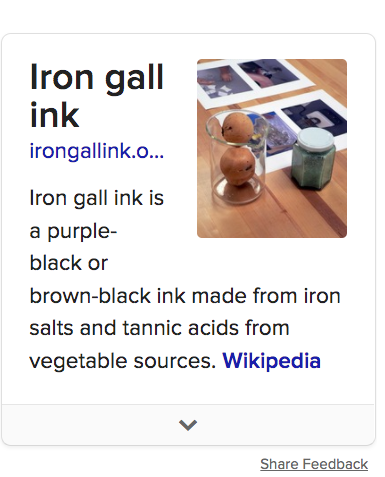
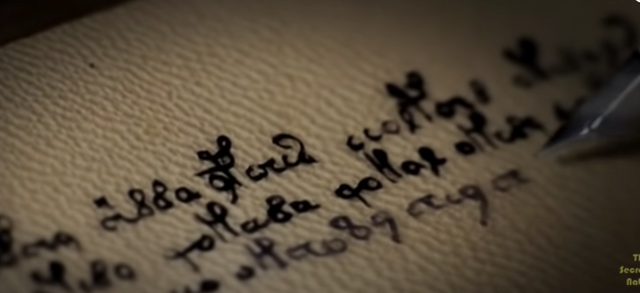
The constituents vary somewhat from batch to batch.
The blue is ground Azurite.

http://www.essentialvermeer.com/palette/palette_azurite.html

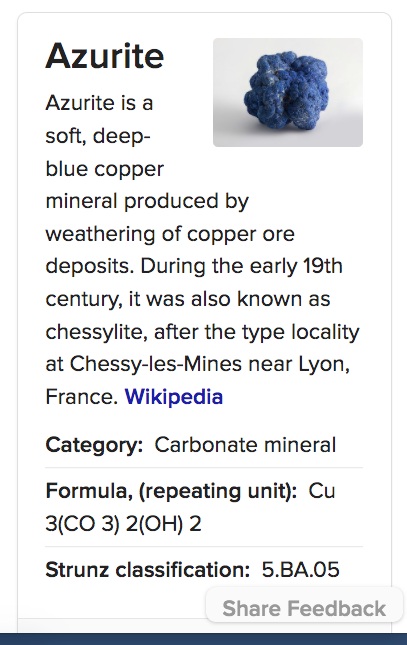
Red and brown are iron earth pigments.
Red ochre with hematite.
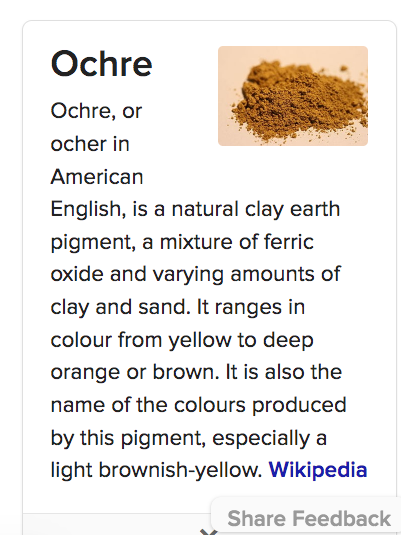
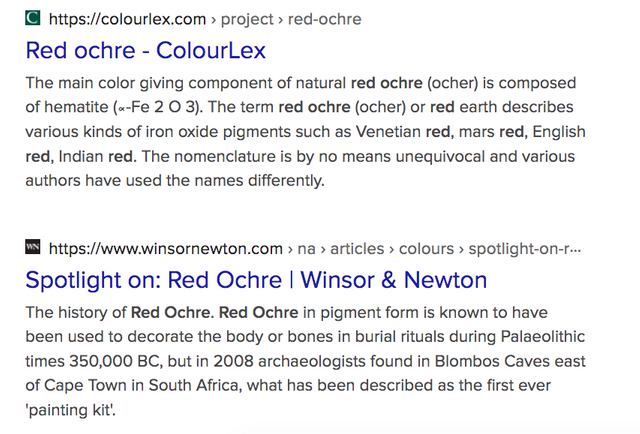
https://www.winsornewton.com/na/articles/colours/spotlight-on-red-ochre/
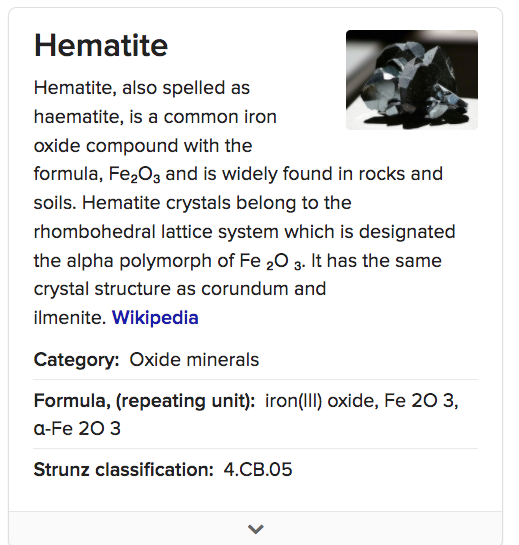
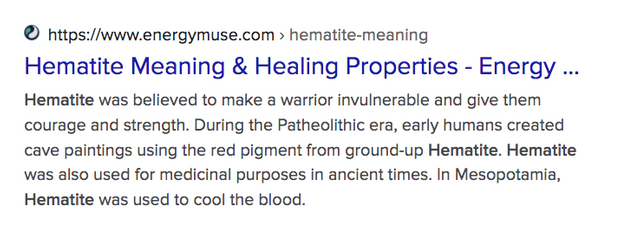
What we found was the materials that constitute the writing and the painting are what were used in the time period of the 15th and 16th centuries.
No materials at all were found that would indicate it was a 19th or 20th century document, thus no support of a forgery.
The paints and inks appear to be proof that the Voynich Manuscript is authentic!
Centuries ago color pigments were very costly.
Preparing the colors took complex knowledge and skill.
In many cases Arabic gum was used to bind the pigments.
Painting with mineral pigments is a technical skill.
Larger crystals have a stronger glow, but they are harder to apply than finely pulverized minerals.
To get bright hues as are seen in the Voynich Manuscript, the colors have to be applied with great care. The artist was clearly very skilled in doing this.
In stark contrast however; the drawings appear very sloppy, some would call them naive. Why?
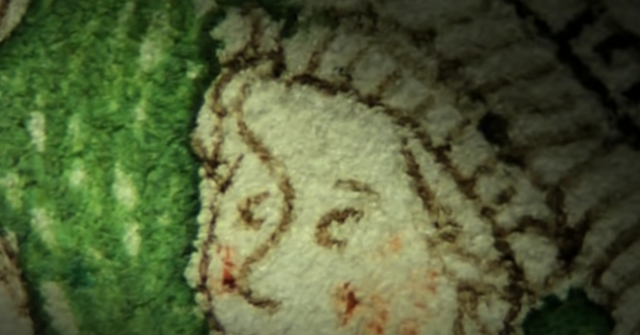
Many figures in the manuscript such as this little dragon or the red cheeked women seem to be creations of a child.
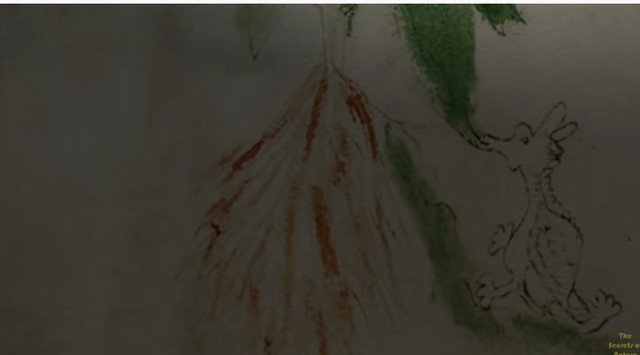
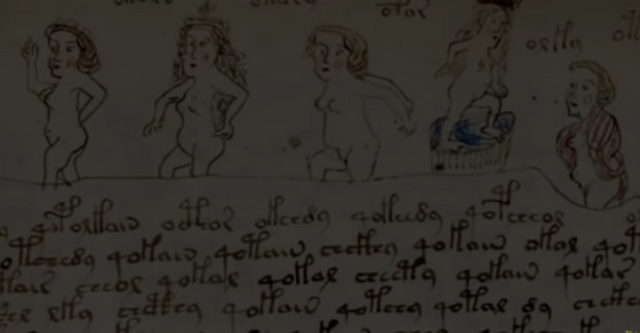
At the Beineke Library Edith Sherwood proposes an astonishing theory.
This first picture she saw of the manuscript was this one and she assumed it was written by a young Leonardo da Vinci.
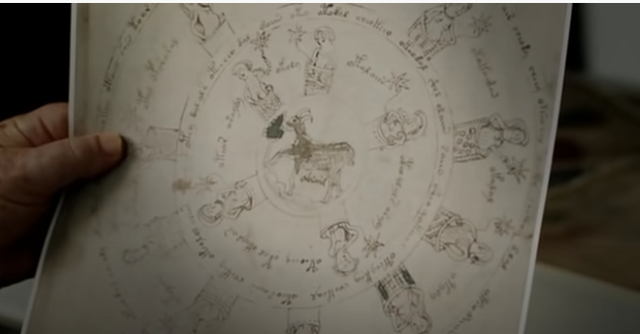
Leonardo was a gifted child growing up in a wealthy family.
At an early age he would have had the opportunity to practice with a brush and pen.
This poses the question, does the Voynich Manuscript contain some of his first illustrations?
If you look at the quality of the drawings you realize they are not very sophisticated.
This lends to the possibility that it was done by someone of clear talent while they were a child.
One page in particular hints at da Vinci.
There is an astrological picture which shows the 15 different nude ladies sitting in tubs and some of them are obviously pregnant.
And a ram representing the astrological symbol Aries.
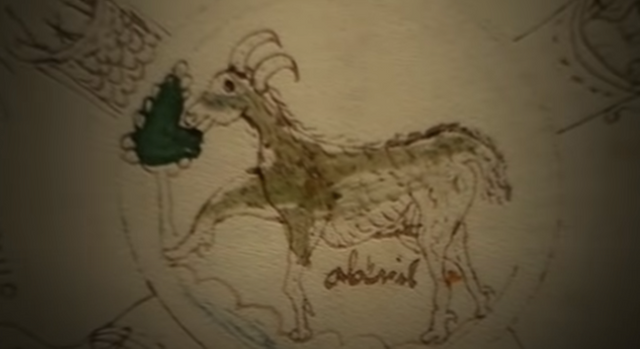
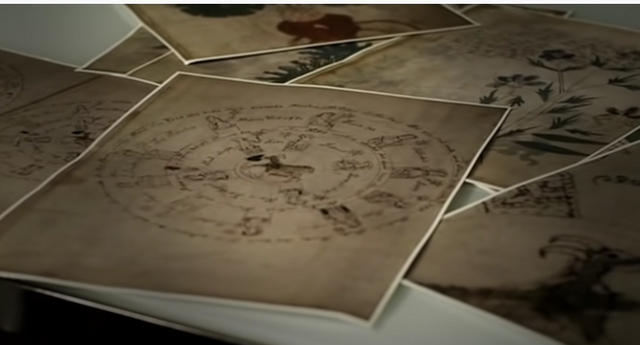
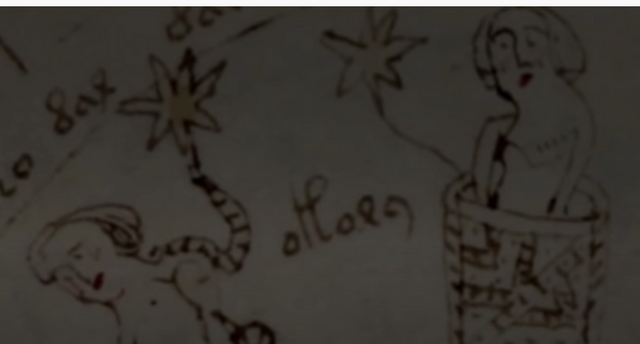
Codes throughout history
- The Ceasar code used by Julius was popular throughout the Middle Ages
a Shift Code where the alphabet is simply shifted forward 4 digits so that A becomes D, B becomes E and so forth.
Easy to use and clearly simple to crack.
All someone had to know was by how many letters the alphabet was being shifted.
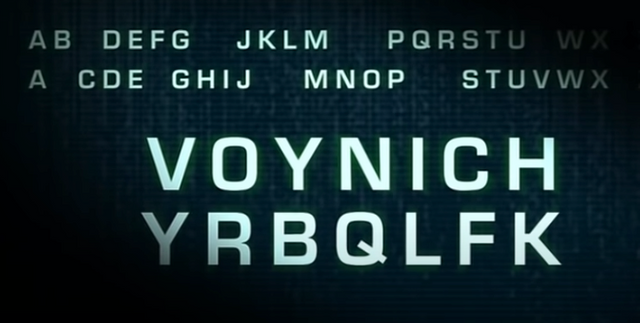
So to crack it, would take the maximum of 25 attempts.
The coding wasn't safe, so in 1330 the Papal court tried to create a code book wherein strategic key words like Pope, church or king were replaced by single characters.
To decipher such a message, the receiver had to have a list of the code words.
When this method is used, it results in ever growing code lists that are tedious to update.
Another problem is the secured transfer of these lists from the sender to the receiver.
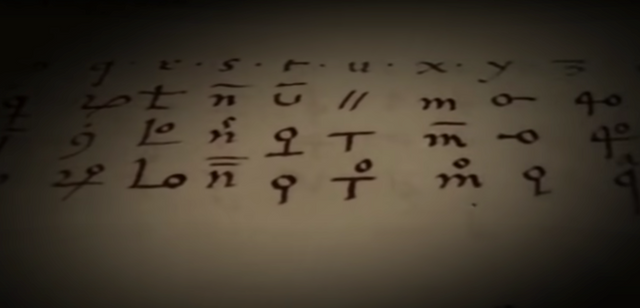
Easier to handle and more efficient,
The Cipher Disk.
Several revolving rings with characters enabled the user to create more complex codes.
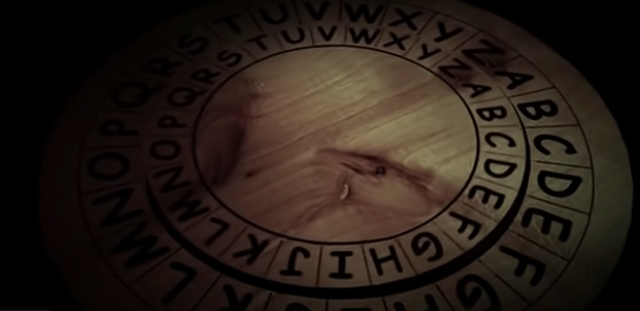
The Cipher Square was another development in the late 16th Century.
From a modern perspective some may find these methods simplistic.
Today with enhanced frequency analysis and computer assisted decoding methods we can easily crack coded text up to the 17th even the 18th Centuries.
For this we need a critical mass.
30 characters are not sufficient.
If given that the plain text made sense, any coded text from that period can be deciphered.
So does this profusion of characters represent a text that makes sense?
In order to find out, all 170,000 characters of the manuscript have been electronically evaluated.
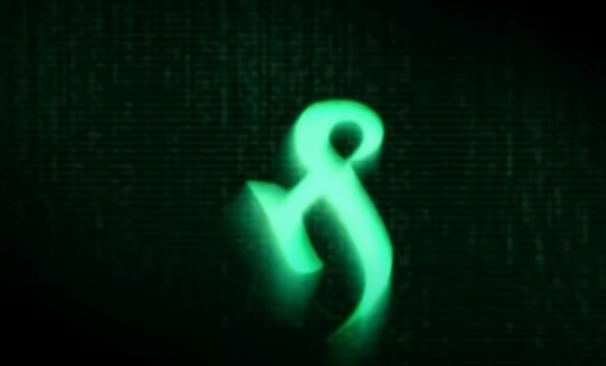
The distribution pattern of each character could then be compared to known patterns of natural languages.
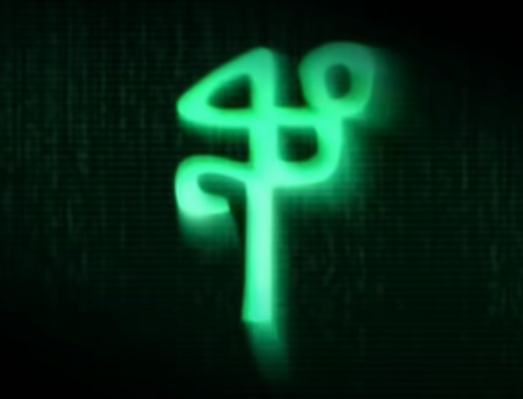
The result, some characters do occur more often than others.
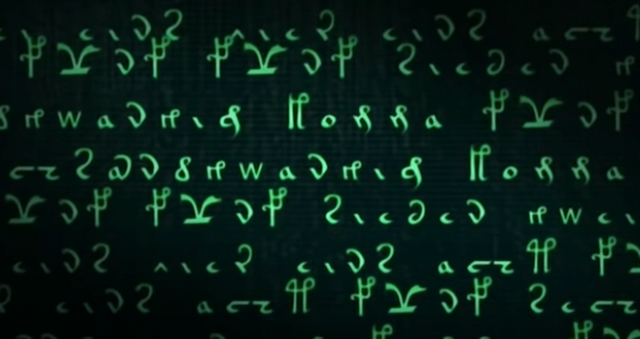
Like particular vowels in European languages.
However, most elements of the Voynich text do not correspond to any patterns of phonetic patterns of any natural language.
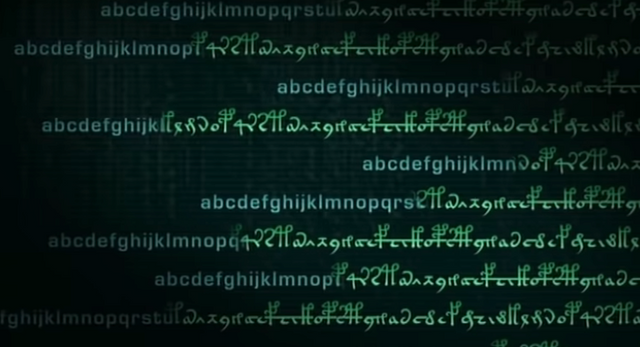
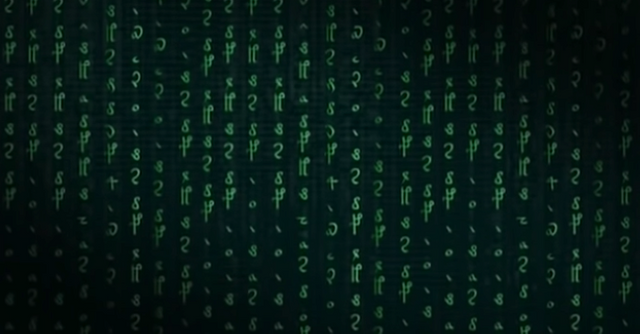
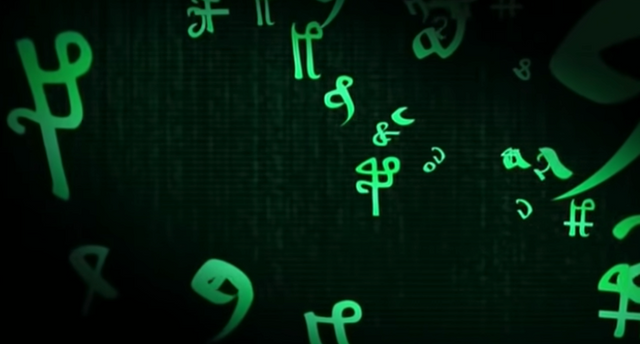
In spite of all the modern technical tools that have been applied, the mysterious manuscript has not yielded it's secret.
The code remains uncracked.
Linguist, Gordon Rug still thinks he is on the right track.
His focus is the author's motive.
He states, "to me, the fact that it's still not be cracked by modern cryptographic techniques, makes it highly unlikely that there's any real cypher in there.
Is the Voynich Manuscript a coded message?
The distribution patterns seem to point in a different direction.
Did the author just want to make people think the book contained something mysterious?
Did the author use historical coding tools?
Some wonder f Edward Kelley did it.
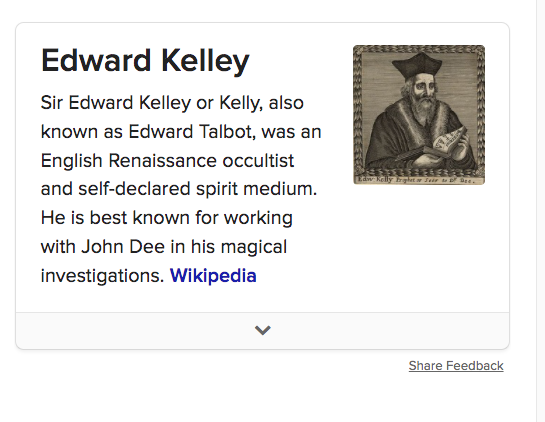
Legends began to surround Kelley shortly after his death. His flamboyant biography, his relationships with Queen Elizabeth I's royal magus Sir John Dee and the Emperor Rudolf II, and his claims of great alchemical skill and the ability to communicate with angels have all led to his relative notoriety among historians. This has made him (along with the German Faustus and Dee himself) one source for the folklorical image of the alchemist-medium-charlatan.
Could motive been money for whomever the author was?
Rudolf II, who had purchased it had many scientists on his pay roll. These included dabblers.
Kelley was an alchemist, who claimed he could produce gold from ordinary materials.
Samples of the parchment made from animal skin were taken and analyzed.
Everyone was shocked at the results.
With 95% confidence they show the manuscript to have been written between 1404 - 1438 A.D.
This result overthrew all of the previous assumptions of the manuscripts origin.
Many of the authors people speculated about were born too late.
Even Edward Kelley live 1 1/2 centuries later.
Some experts believe it was written around 1420 and this gives one detail of the manuscript new meaning.
#Voynich, #VoynichManuscript, #Cypher, #Cryptographers, #WilliamFriedman
https://www.cryptologichistory.org/speakers/rene-zandbergen
Downvoting a post can decrease pending rewards and make it less visible. Common reasons:
Submit